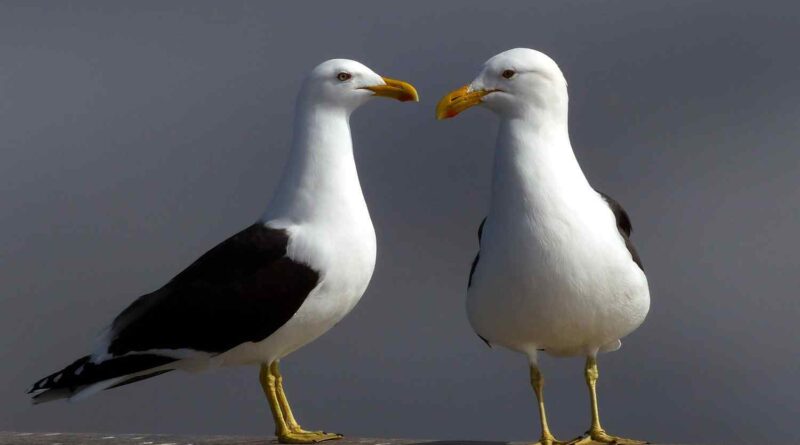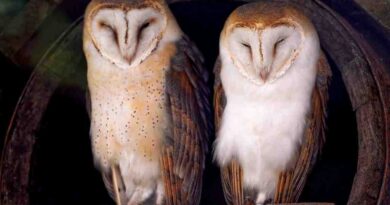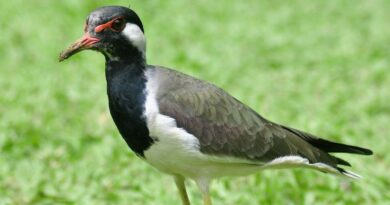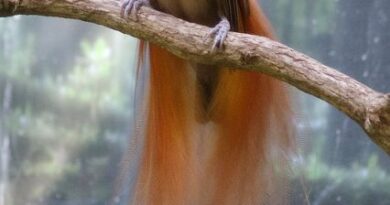Black Backed Gulls
GULLS, medium to large birds with moder- ately long wings and tail, the adult plumage white with darker wings and back. The outermost wing feathers are black or bave black tips (black feathers are stronger than white and these outer feathers become very worn). All gulls can fly and swim strongly.
GULLS, medium to large birds with moder- ately long wings and tail, the adult plumage white with darker wings and back. The outermost wing feathers are black or bave black tips (black feathers are stronger than white and these outer feathers become very worn). All gulls can fly and swim strongly.
The distribution of the Herring and Lesser black-backed gulls, the L. argentatus-fuscus group, provides a classical example of geo- graphic speciation and of a ring species. Between them the subspecies of the two species encircle the globe in Europe, north Asia and northern North America. In Britain the ends of the chain overlap and there are two species which are very different in plumage and habits and which breed side-by- side without interbreeding. Therefore they can be considered separate species. Even though there are several well marked geo- graphical forms of both species in other arcas, it is difficult to draw a line separating the twO species because there is a perfect series of forms linking the two extremes. Althougn Climatic changes have altered the distribution of SOme forms, it is possible to piece together the likely development of this ring species. In geologically very recent times there woe probably a single spccies of this type of gull in easterm Siberia or the Bering Sea. This spread castwards and westwards, and as birds colonized new areas, they altered slightly. Gradually these new populations stabilized as separate races and in due course the two ends of the chain developed into what we now know as the Herring gull (with a pale grey back, fiesh-coloured legs, yellow eye-ring) on the Atlantic seaboard of Canada and the Lesser black-backed gull (yellow legs, dark grey back, red eye-ring) in western Europe and Britain. By the time the Herring gull colonized Europe the two forms had become so distinct that they co-existed as separate species without interbreeding.
The nest is normally an untidy mass of vegetation, usually on the ground, less com- monly on a cliff or tussock of vegetation, and rarely in a tree or on a building. The normal clutch of three eggs is incubated tor about 28 days. On hatching the downy young are quite mobile, but must be pro- tected and fed by the parents. Fledging normally takes six to eight weeks.
Behaviour of animals can be modified by natural selection so that the best adapted individuals will leave the most offspring. Chicks of many species of gulls are fed near the nest by the parents regurgitating food onto the ground. As the young may be hiding some distance away, both the adults and young have special feeding calls so that they can contact each other. The kittiwake Rissa tridactyla nests on very small ledges on precipitous cliffs and the young take food from the back of the parent’s throat since if food was regurgitated both it and the young, would be in danger of falling from the nest. As the chicks cannot move from the nest, no feeding calls have been developed, and unlike most gulls, adults do not learn to recognize their own chicks. FAMLY: Laridae, ORDER: Charadriiformes, CLASS: Aves.
The distribution of the Herring and Lesser black-backed gulls, the L. argentatus-fuscus group, provides a classical example of geo- graphic speciation and of a ring species. Between them the subspecies of the two species encircle the globe in Europe, north Asia and northern North America. In Britain the ends of the chain overlap and there are two species which are very different in plumage and habits and which breed side-by- side without interbreeding. Therefore they can be considered separate species. Even though there are several well marked geo- graphical forms of both species in other arcas, it is difficult to draw a line separating the twO species because there is a perfect series of forms linking the two extremes. Althougn Climatic changes have altered the distribution of SOme forms, it is possible to piece together the likely development of this ring species. In geologically very recent times there woe probably a single spccies of this type of gull in easterm Siberia or the Bering Sea. This spread castwards and westwards, and as birds colonized new areas, they altered slightly. Gradually these new populations stabilized as separate races and in due course the two ends of the chain developed into what we now know as the Herring gull (with a pale grey back, fiesh-coloured legs, yellow eye-ring) on the Atlantic seaboard of Canada and the Lesser black-backed gull (yellow legs, dark grey back, red eye-ring) in western Europe and Britain. By the time the Herring gull colonized Europe the two forms had become so distinct that they co-existed as separate species without interbreeding.
The nest is normally an untidy mass of vegetation, usually on the ground, less com- monly on a cliff or tussock of vegetation, and rarely in a tree or on a building. The normal clutch of three eggs is incubated tor about 28 days. On hatching the downy young are quite mobile, but must be pro- tected and fed by the parents. Fledging normally takes six to eight weeks.
Behaviour of animals can be modified by natural selection so that the best adapted individuals will leave the most offspring. Chicks of many species of gulls are fed near the nest by the parents regurgitating food onto the ground. As the young may be hiding some distance away, both the adults and young have special feeding calls so that they can contact each other. The kittiwake Rissa tridactyla nests on very small ledges on precipitous cliffs and the young take food from the back of the parent’s throat since if food was regurgitated both it and the young, would be in danger of falling from the nest. As the chicks cannot move from the nest, no feeding calls have been developed, and unlike most gulls, adults do not learn to recognize their own chicks. FAMLY: Laridae, ORDER: Charadriiformes, CLASS: Aves.



